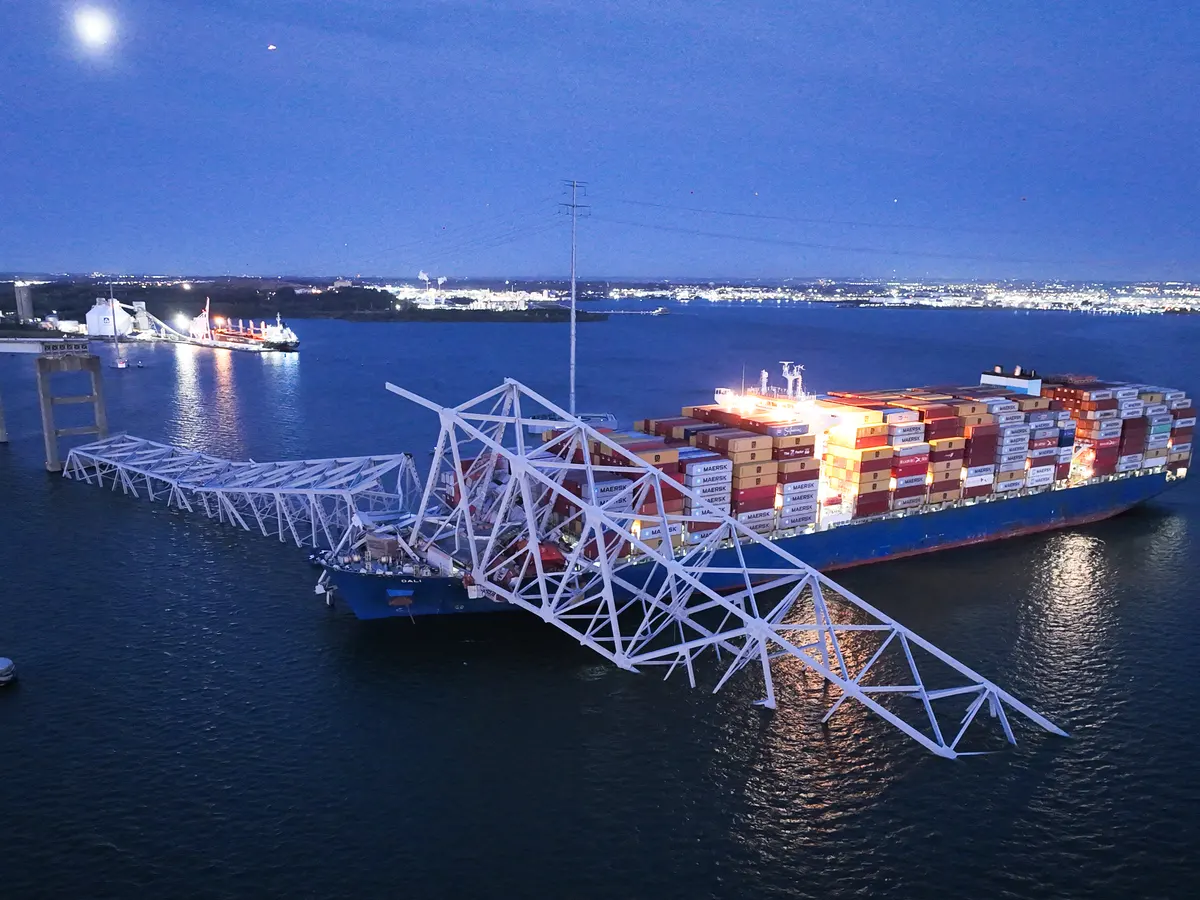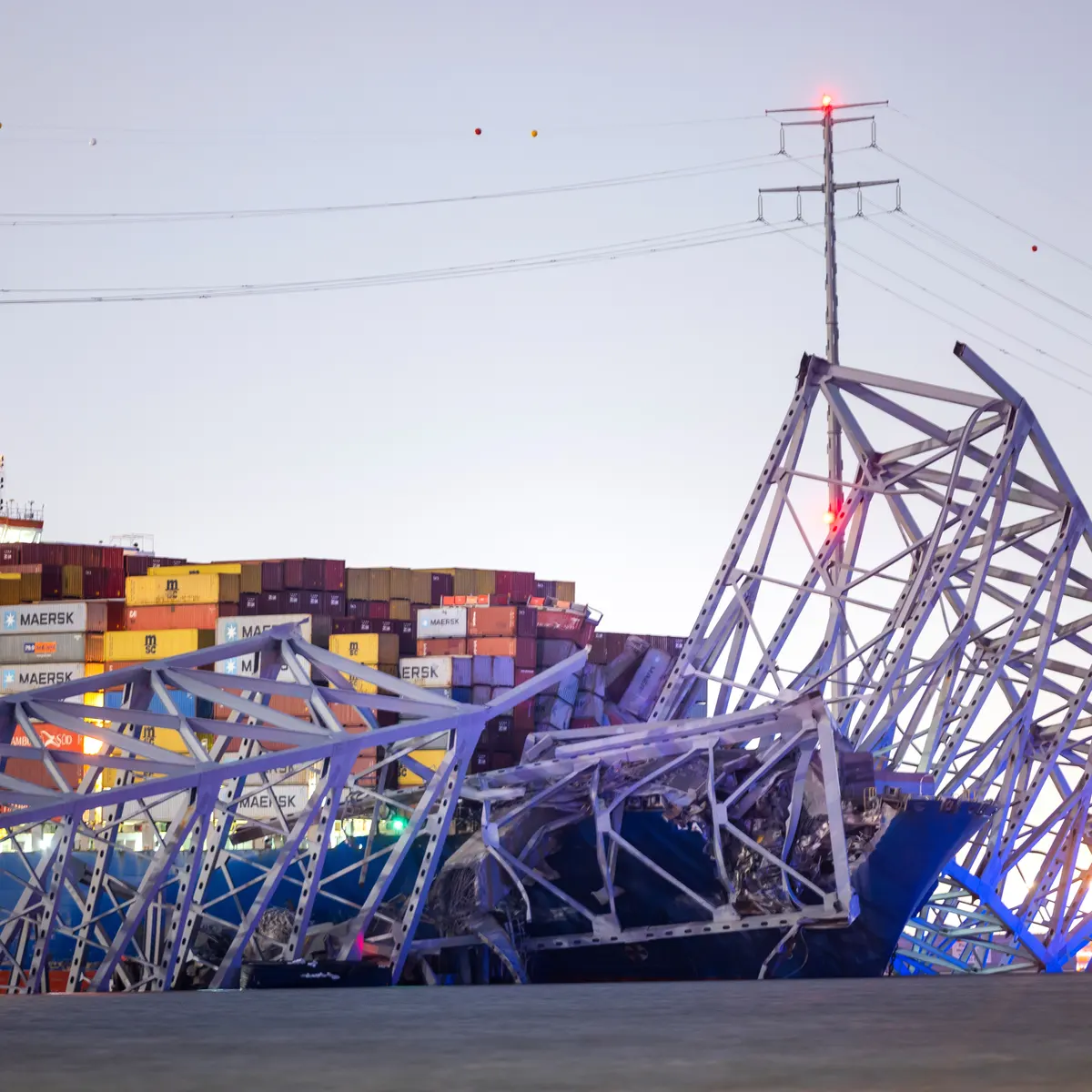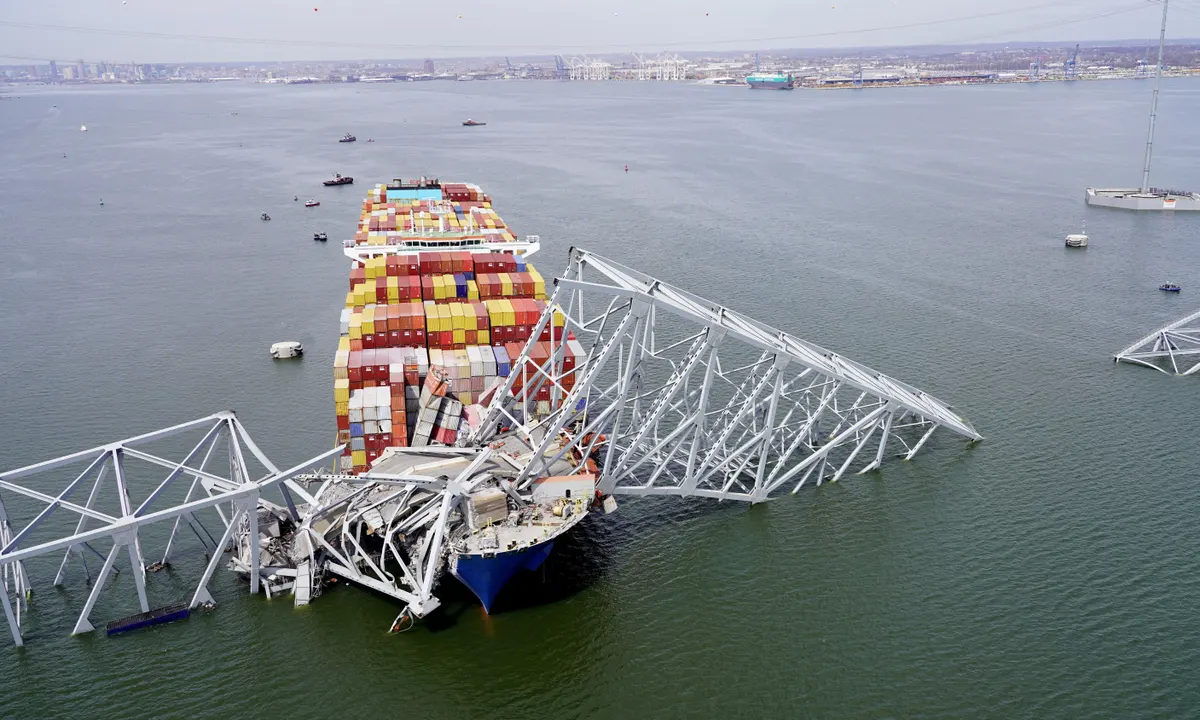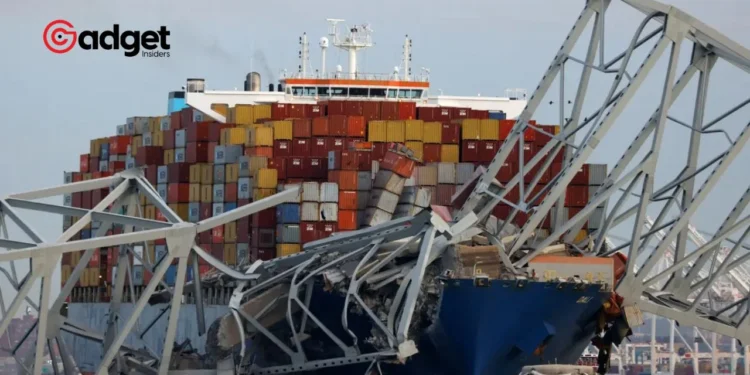In the early hours of a fateful Tuesday morning, a spectacle of devastation unfolded as the Francis Scott Key, Baltimore Bridge met with a calamitous fate, collapsing into the Patapsco River. This incident, triggered by a collision with a colossal container ship, has not only plunged the city into a state of emergency but also cast a harsh spotlight on the fragile state of America’s critical infrastructure.
With six individuals still missing in the aftermath, the tragedy has morphed into a national concern, raising alarms over the resilience of the United States’ bridge network.
Baltimore Bridge: The Collision That Shook Baltimore
According to official reports, the container ship, losing power and straying off course, issued a mayday signal before the catastrophic impact.
This event has stirred a whirlwind of scrutiny, not merely towards the ill-fated bridge but also across the sprawling expanse of American bridges, many of which dangle on the brink of being deemed unsafe.

Maryland’s Governor, Wes Moore, assured the public that the Baltimore bridge was “fully up to code.”
Yet, this assertion only deepens the intrigue, as the codes in question predate the era of the supersized vessels of today. Andrew Barr, a revered figure in civil and structural engineering from the University of Sheffield, pointed out the stark reality: the Baltimore Bridge, erected in 1977, was not designed to withstand an encounter of such magnitude.
The absence of modern protective measures against ship collisions underscores a critical oversight in infrastructure planning and resilience.

A Mirror to America’s Ailing Bridges
This disaster does more than highlight a singular event; it reflects the broader, more systemic issue plaguing the United States’ infrastructure. The American Road & Transportation Builders Association has voiced concerns, noting that over a third of U.S. bridges necessitate urgent repairs.
The staggering figure of 43,000 bridges labeled as “structurally deficient” poses a silent threat of potential collapses, reminiscent of the tragedy that unfolded in Baltimore.
Baltimore bridge collapse: Two bodies recovered from water as search for remaining missing workers continues https://t.co/IhJHlLAk45
— The Irish Times (@IrishTimes) March 28, 2024
Rick Geddes, a luminary in infrastructure policy, views the Baltimore bridge collapse as a clarion call for a seismic shift in how America rebuilds its infrastructure.
The path forward, as Geddes suggests, lies in embracing innovation — from new materials and designs to the integration of real-time communication technologies between bridges and approaching vessels. This incident serves as a stark reminder of the vulnerability of critical infrastructure to not only natural wear and tear but also to unforeseen and abrupt calamities.
Legislative Response and a Vision for the Future
The crumbling state of American bridges has not gone unnoticed by the federal administration. The Biden administration’s $1.2 trillion bipartisan infrastructure law, earmarking $110 billion for the refurbishment of roads and bridges, signifies a monumental stride towards bridging the gap between the current state of disrepair and a future of robust, resilient infrastructure.
President Biden’s commitment to funding the full cost of replacing the Francis Scott Key, Baltimore Bridge underscores a pivotal moment in America’s journey toward revitalizing its foundational structures.

“For decades, people talked about replacing this Baltimore bridge, but it never got done. Until today,” President Biden said.
These words echo the urgency and collective resolve to fortify the nation’s infrastructure against the test of time and unforeseen disasters.
As America stands at this critical juncture, the tragedy of the Francis Scott Key, Baltimore Bridge serves as a somber reminder of the fragility of human ingenuity when faced with the forces of nature and the march of progress.
It beckons a call to action for a future where such calamities are not merely mitigated but prevented through foresight, innovation, and a steadfast commitment to public safety and the well-being of future generations.










